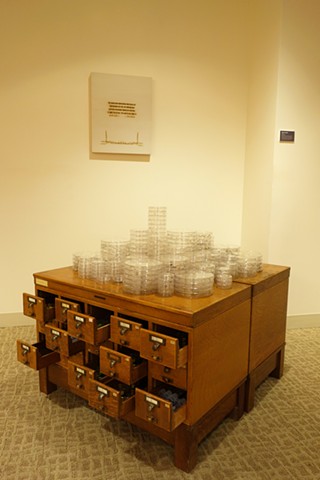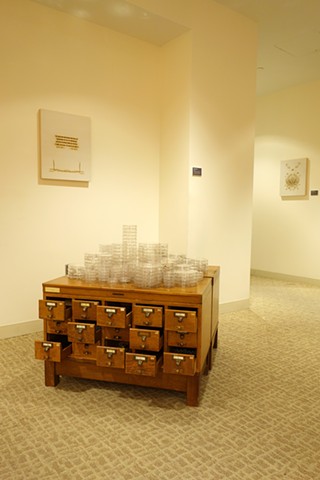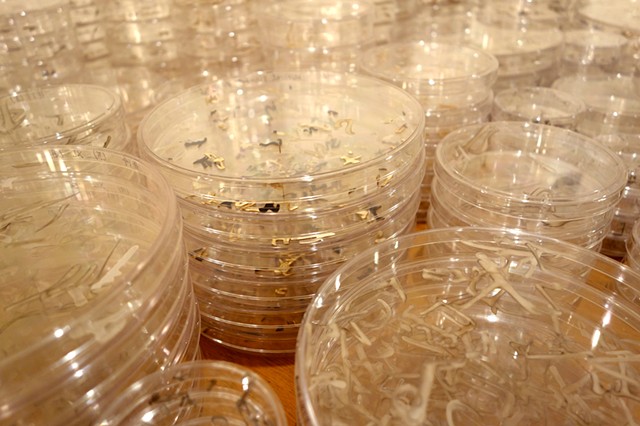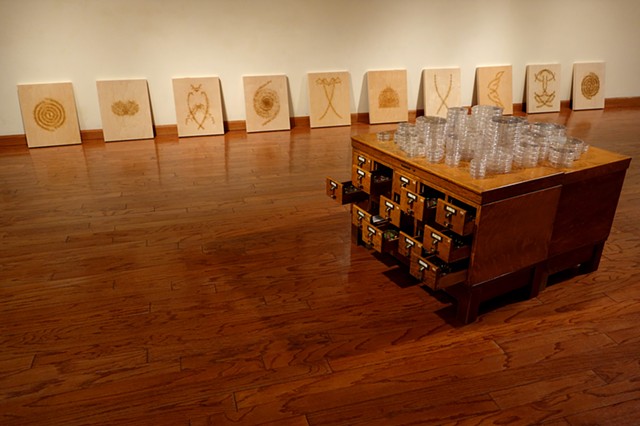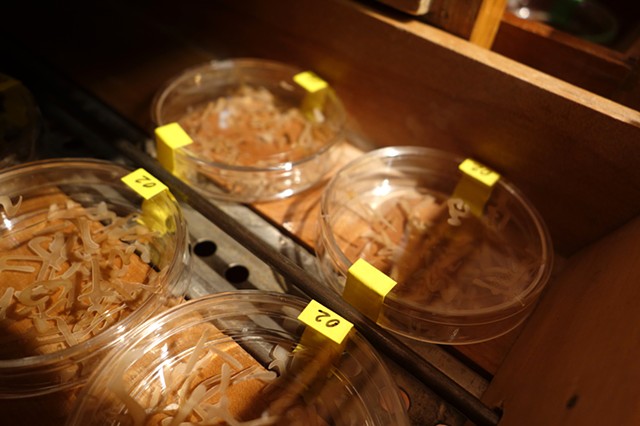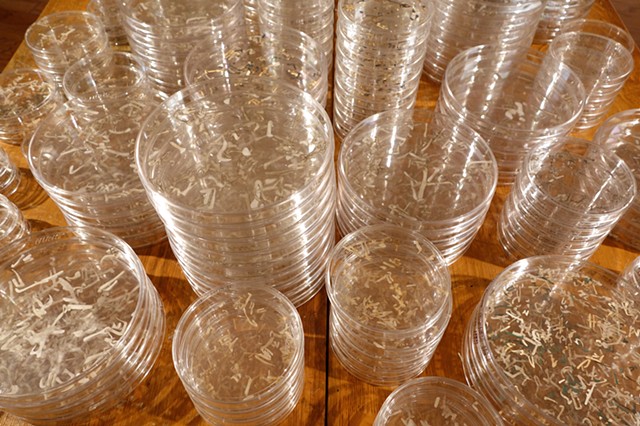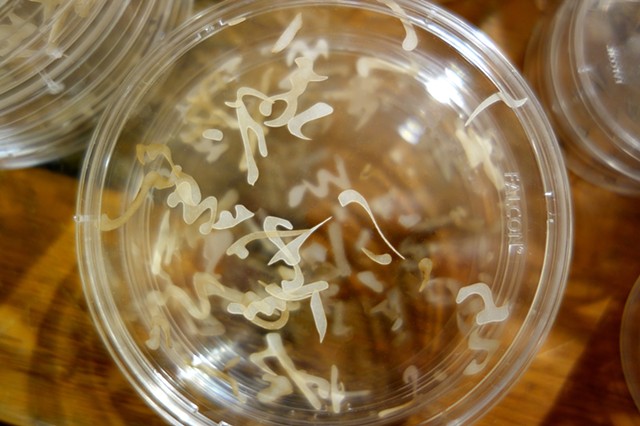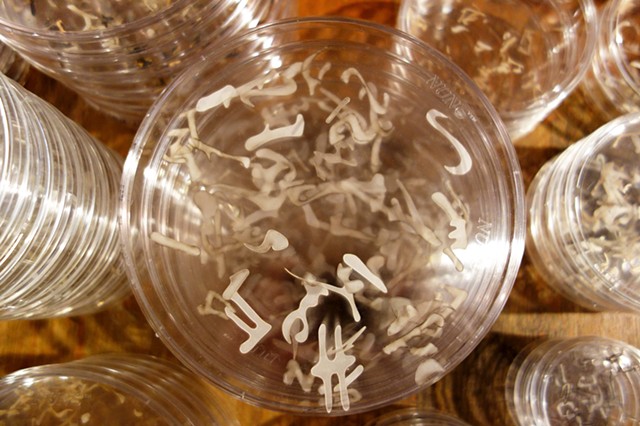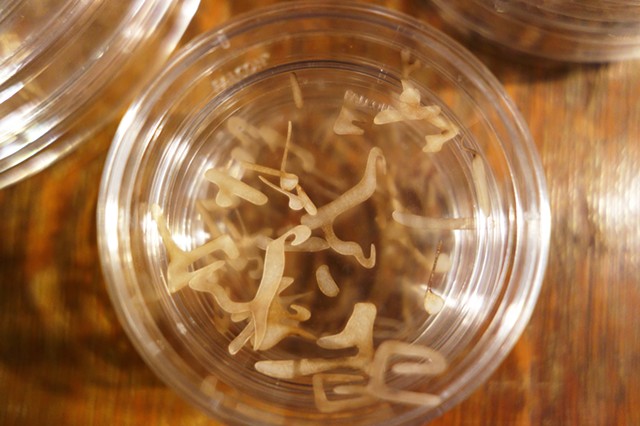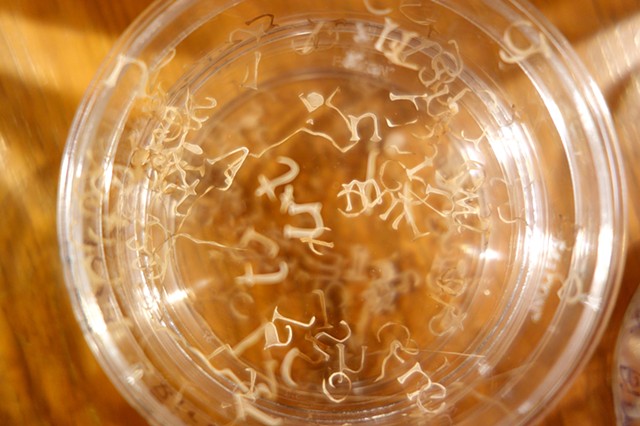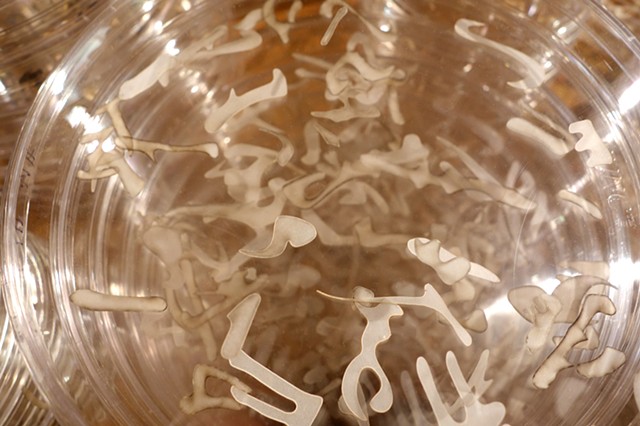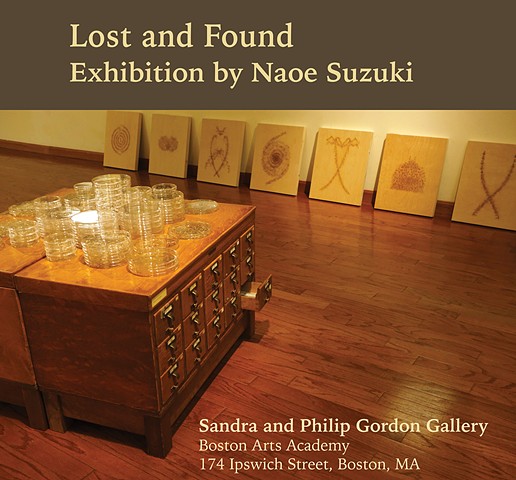Library
Library
2016 - 2017
Laser cut vellum in Petri dishes, various lab tools in the drawers, and deaccessioned library card catalog cabinets.
Approximately 45" (L) x 35" (H) x 30" (W)
Each petri dish contains laser cut vellum of hieratic letters (cursive Egyptian hieroglyphics) that described magic spells for treating illnesses in The Edwin Smith Papyrus, the earliest known surgical treatise on trauma dating back to around 1,600 BCE in ancient Egypt. Inside the library card catalog cabinet drawers are various present-day lab tools and more petri dish.
When I was a child, a town library was my favorite hang-out spot after school. At the college, I used card catalogs to look for books for my papers. Card catalogs are obsolete now, replaced by digital data search systems, and card catalog cabinets are no longer being used. I inherited a few of these cabinets from work and used them for this installation, thinking about obsolete systems, belief from a distant past, and knowledge housed in library.
